Efficacy and tolerability of neoadjuvant therapy with Talimogene laherparepvec in cutaneous basal cell carcinoma: a phase II trial (NeoBCC trial)
- PMID: 39820126
- PMCID: PMC11779647
- DOI: 10.1038/s43018-024-00879-x
Efficacy and tolerability of neoadjuvant therapy with Talimogene laherparepvec in cutaneous basal cell carcinoma: a phase II trial (NeoBCC trial)
Abstract
We present a single-arm, phase II, neoadjuvant trial with the oncolytic virus talimogene laherparepvec (T-VEC) in 18 patients with difficult-to-resect cutaneous basal cell carcinomas. The primary end point, defined as the proportion of patients, who after six cycles of T-VEC (13 weeks), become resectable without the need for plastic reconstructive surgery, was already achieved after stage I (9 of 18 patients; 50.0%); thus the study was discontinued for early success. The objective response rate was 55.6% and the complete pathological response rate was 33.3%. Secondary end points included safety, relapse-free survival and overall survival, time to occurrence of new basal cell carcinomas and biological read outs. Only mild adverse events occurred. The 6-month relapse-free survival and overall survival rates were 100%. In two patients a new basal cell carcinoma was diagnosed. T-VEC led to a significant increase in cytotoxic T cells (P = 0.0092), B cells (P = 0.0004) and myeloid cells (P = 0.0042) and a decrease in regulatory T cells (P = 0.0290) within the tumor microenvironment. Together, neoadjuvant T-VEC represents a viable treatment option for patients with difficult-to-resect basal cell carcinomas (EudraCT no. 2018-002165-19).
© 2025. The Author(s).
Conflict of interest statement
Competing interests: J.M.R. received speaker honoraria from Bristol-Myers Squibb, Roche, Amgen and Novartis and travel support by Sanofi, Roche and Bristol-Myers Squibb through the institution. P.T. received honoraria from Silverchair, unrestricted grants for education projects from Lilly, and honoraria for lectures from AbbVie, Lilly, FotoFinder and Novartis. J.T. reports an unrestricted grant from Lilly, consulting fees from Lilly, speaker honoraria from Lilly and Novartis, all outside the submitted work, as well as travel support from Almirall, AbbVie and Bristol-Myers Squibb through institution. C.H. reports speaker honoraria from Amgen, BMS, MSD, Novartis, Roche, participation in advisory Boards: Amgen, Astra Zeneca, BMS, Incyte, MSD, Novartis, Pierre Fabre, Roche and research funding by Amgen to the institution. The other authors declare no competing interests.
Figures
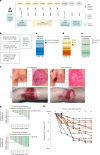
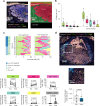
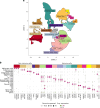
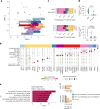

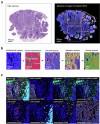
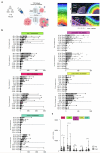
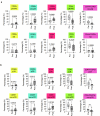
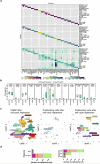

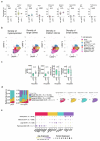
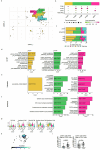
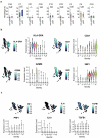

Similar articles
-
Effectiveness and safety of talimogene laherparepvec and granulocyte-macrophage colony-stimulating factor for metastatic melanoma: a systematic review and network meta-analysis of randomized controlled trials.Melanoma Res. 2025 Feb 1;35(1):60-66. doi: 10.1097/CMR.0000000000001010. Epub 2024 Dec 24. Melanoma Res. 2025. PMID: 39787519
-
Neoadjuvant treatment for stage III and IV cutaneous melanoma.Cochrane Database Syst Rev. 2023 Jan 17;1(1):CD012974. doi: 10.1002/14651858.CD012974.pub2. Cochrane Database Syst Rev. 2023. PMID: 36648215 Free PMC article.
-
Talimogene laherparepvec (T-VEC) as a treatment for melanoma: A systematic review.J Oncol Pharm Pract. 2025 Apr;31(3):481-487. doi: 10.1177/10781552241312920. Epub 2025 Jan 17. J Oncol Pharm Pract. 2025. PMID: 39819188
-
Single agent Talimogene Laherparepvec for stage IIIB-IVM1c melanoma patients: A systematic review and meta-analysis.Crit Rev Oncol Hematol. 2022 Jul;175:103705. doi: 10.1016/j.critrevonc.2022.103705. Epub 2022 May 13. Crit Rev Oncol Hematol. 2022. PMID: 35569723
-
Sun protection for preventing basal cell and squamous cell skin cancers.Cochrane Database Syst Rev. 2016 Jul 25;7(7):CD011161. doi: 10.1002/14651858.CD011161.pub2. Cochrane Database Syst Rev. 2016. PMID: 27455163 Free PMC article.
Cited by
-
Efficacy of oncolytic virus in the treatment of intermediate-to-advanced solid tumors: a systematic review and meta-analysis.J Virol. 2025 Jul 22;99(7):e0064025. doi: 10.1128/jvi.00640-25. Epub 2025 Jun 20. J Virol. 2025. PMID: 40539780 Free PMC article.
References
-
- Verkouteren, J. A. C., Ramdas, K. H. R., Wakkee, M. & Nijsten, T. Epidemiology of basal cell carcinoma: scholarly review. Br. J. Dermatol.177, 359–372 (2017). - PubMed
-
- Kappelin, J., Green, A. C., Ingvar, Å., Ahnlide, I. & Nielsen, K. Incidence and trends of basal cell carcinoma in Sweden: a population-based registry study. Br. J. Dermatol.186, 963–969 (2022). - PubMed
-
- Lomas, A., Leonardi-Bee, J. & Bath-Hextall, F. A systematic review of worldwide incidence of nonmelanoma skin cancer. Br. J. Dermatol.166, 1069–1080 (2012). - PubMed
-
- Schreuder, K., Hollestein, L., Nijsten, T. E. C., Wakkee, M. & Louwman, M. W. J. A nationwide study of the incidence and trends of first and multiple basal cell carcinomas in the Netherlands and prediction of future incidence. Br. J. Dermatol.186, 476–484 (2022). - PubMed
Publication types
MeSH terms
Substances
Associated data
LinkOut - more resources
Full Text Sources
Medical

